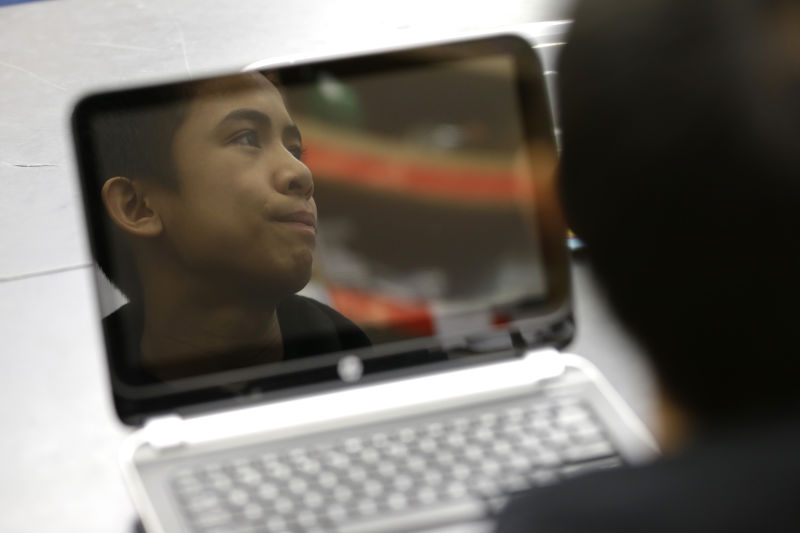"Coding is not just a set of technical skills," he tells NPR Ed. "It's a new way of expressing yourself. It's similar to learning to write — a way for kids to organize, express and share ideas. But instead of putting words into sentences, now they can create animated stories."
Many popular apps for teaching programming are structured more like games, with a simple set of instructions to reach a predefined outcome. But that's unnecessarily dull, Resnick argues.
"If you have kids put blocks together to solve the puzzle, that can be useful for learning basic computing concepts. But we think it's missing an important part of what's exciting about coding. If you present just logic puzzles, it's like teaching them writing by only teaching grammar and punctuation."
ScratchJr takes more of a "sandbox" approach: Students can make greeting cards, or build games themselves, but the project is up to them.
This week, in concert with Hour of Code, a new version of ScratchJr is launching that features characters from PBS Kids cartoon shows, like Wild Kratts and Odd Squad. PBS, with the backing of the federal Department of Education and Verizon, will over the coming year be working on related outreach to high-poverty schools, including in-person after-school programs and summer camps.
Sara DeWitt, vice president of PBS Kids Digital, said PBS has been looking for an opportunity to get involved in coding and programming for a while, but in a way that matched how children already engage with their characters.
"All of this came together with ScratchJr," she said, "because MIT and Tufts' approach to coding is really about creative self-expression and storytelling, and looking at code as a literacy — a way to tell a story."
It's significant that PBS, the leading brand in educational media, is now lending its characters to the cause of teaching computer science to children as young as kindergarteners. Yet this shift comes at a time of rising anxiety about the ubiquity of screens in childhood.
For Resnick, a good litmus test is to ask, "Does this support creativity and expression?" The answer, he says, can determine whether a technology is truly educational and developmentally appropriate.
"As children spend more and more time interacting with digital devices, they don't have very many opportunities to create and experiment," he explains.
"Oftentimes it's playing, clicking, consuming, as opposed to designing and expressing. I would tell parents to look for either the apps or the toys where the child is in control. If it feels that the toy or tablet is in control, then I'd be much more cautious about it."
Copyright 2015 NPR. To see more, visit http://www.npr.org/.
9(MDAxOTAwOTE4MDEyMTkxMDAzNjczZDljZA004))



9(MDAxOTAwOTE4MDEyMTkxMDAzNjczZDljZA004))